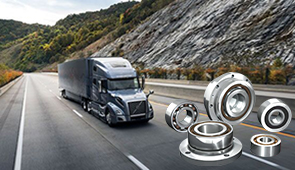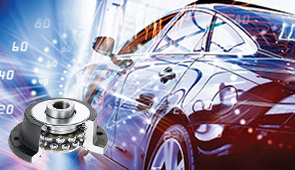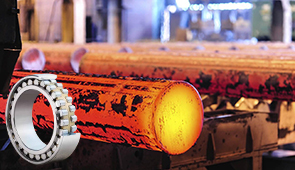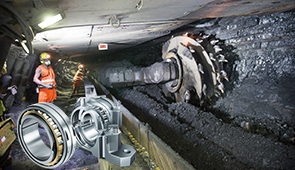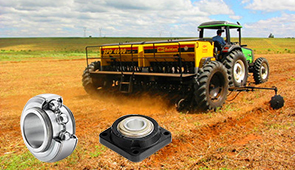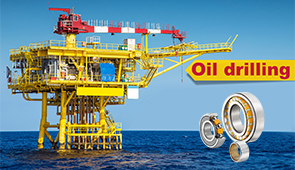Common Bearing Problems and Solutions: Preventing Bearing Failure
Bearings are critical components in a wide range of industrial and mechanical applications, playing a pivotal role in reducing friction, supporting loads, and ensuring smooth rotational movement. However, even minor issues with bearings can lead to significant operational setbacks, unplanned downtime, and costly repairs. Understanding the root causes of bearing failure is crucial not only for preventing system inefficiencies but also for extending the lifespan of machinery. This article explores the most common bearing problems, their underlying causes, and practical solutions to ensure optimal performance and reliability in your equipment. Whether you’re working in manufacturing, automotive, or heavy machinery industries, this comprehensive guide will provide expert insights to help you identify, prevent, and resolve bearing-related challenges effectively.
What Are the Most Frequent Bearing Issues?
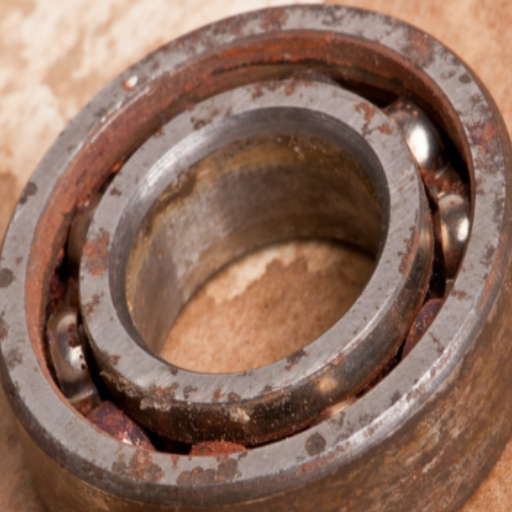
Understanding Bearing Problems
Bearings are inaccurate components of mechanical systems because several issues can arise that affect their performance and durability. The easiest issues to spot and solve include contamination, improper lubrication, misalignment, and excess load. If inadequate attention is provided to these issues promptly, they can lead to increased wear and tear, overheating, or complete system failure.
Foreign contaminating particles, such as dirt, dust, or moisture, can infiltrate the bearing system and cause contamination. Increased friction, which leads to faster damage, can be caused by surface damage too. Regular maintenance is crucial in preventing contamination, while appropriate sealing helps too. Failing to apply lubrication, letting it degrade over time, or even insufficiently applying lubricant can lead to increased friction, which in turn causes heat generation and failure. This problem can be avoided easily by just selecting the right lubricant and setting a proper lubrication schedule.
Both misalignment and excessive load have negative effects on bearings. Misalignment occurs when the shafts and bearings are not installed correctly which results in unequal load distribution, which leads to uneven wear patterns. This problem can be solved by ensuring proper alignment throughout installation and operation. Being subjected to forces greater than a bearing’s rated capacity also leads to excessive loads. This can result in deformation, overheating, and failure. Avoiding sudden overloading conditions and selecting matching load bearings are essential in preventing damage. Addressing these issues enables operators to improve bearing service life and equipment reliability.
Identifying Symptoms of Bearing Failure
Identifying the onset of bearing damage adequately helps in safeguarding the system against catastrophic damages and unforeseen downtimes. Grinding, clicking, and whining are the most common symptom noises relevant to bearing failure. Usually, bearings emit noises due to wear and tear, contamination, or dislocation. These noises are produced when solid particles interrupt the smooth functioning of components or when the surface of the bearings is worn out.
A temperature rise in the vicinity of the bearing housing is one more prominent sign of bearing failure. A bearing overheating or operating at a higher than normal temperature is often the result of a lack of lubrication, excessive load being applied to the bearing, or faulty placement of the bearing. Early indicators of this complication can be observed when there is continuous monitoring of the temperature through the sensors or thermal imaging. Moreover, the pattern of vibrations is also a good measure of evaluating the status of the bearing. Most of the time, bearings not functioning properly produce an imbalance, which leads to excess vibration.
Regular checking swiftly lets one notice glaring issues such as discoloration, scoring, or even deformation of the bearing surface. These bearing problems can be attributed to external factors including overheating, improper lubrication, and contamination. Observing these signs make it easier for operators to adopt proper actions related to maintenance and replacement so that the performance of the equipment is improved and functional.
Causes of Bearing Damage and How to Address Them
Harm to the bearing can come from some critical factors such as improper lubrication, misalignment, contamination, excessive load, etc. One of the reasons bearings fail is due to inadequate lubrication, either through over-lubrication, under-lubrication, or using the wrong lubricant. This can increase friction and surface wear, resulting in overheating. Scheduling regular maintenance using the correct lubricant specified for the application helps alleviate the issue.
Bearing misalignment or misalignment of related components can result in excessive wear and potential deformation due to uneven load distribution. Worn mounts and shaft vibration are some of the reasons that contribute to misalignment. The combination of good alignment during installation and routine inspections to detect and fix any divergence goes a long way in sustaining optimal performance and avoiding foreshortened bearing life.
Pollution through dust, moisture, or any other foreign matter is another common problem because such contaminants can enter the bearing and harm the rolling elements or the raceways. Protective seals and clean installation and maintenance procedures are also important in mitigating this risk. Moreover, bearings subjected to excessive loads beyond what they were designed to withstand may face premature fatigue. To prevent such damage, a detailed analysis of the load during design and operation needs to be conducted, ensuring the bearings are suitable for the application.
How Does Lubrication Affect Bearings?

The Role of Lubricant in Preventing Bearing Issues
Lubrication plays a key role in the functionality and shelf life of a bearing by reducing friction, wear, and heat that is created during operation. In the absence of lubrication, bearings are likely to overheat, cause surface damage, and eventually fail. Several factors need to be looked at while selecting the lubricant which include the operating temperature, speed, load conditions, and even the environment.
The use of special performance-enhancing additives depicts advancement in lubrication technology. These additives enhance service life while offering additional protection from corrosion under extreme conditions. For instance, under heavy loads, high viscosity oil is preferable, and high speed applications are best suited with synthetic greases due to their excellent thermal resistance.
Scheduled lube order, automated lubrication systems, and adherence to proper lubrication intervals greatly improve overall efficiency, thereby significantly minimizing lube-related maintenance risks. Roughly half of all bearing failures are mostly driven by improper or non-monitored lubrication, further stressing the need for scrutiny. Factoring in tailored lubricant selection along with vibration analysis and oil monitoring techniques permits industries to take a preventative stance towards bearing-induced problems.
Common Lubrication Mistakes and Their Impact
While lubrication can help prevent equipment failure, many issues can arise due to improper lubricant application. Equipment wear and machine efficiency can certainly be hampered by poor or ineffective lubrication and can lead to operational failure. A very common problem, over-lubrication, applies too much oil or grease, which leads to excessive heat output and drives up internal pressure. This excessive pressure can lead to failing seals, producing even more inefficient machinery and equipment. Alternately, under-lubrication does not apply enough lubricant, which accelerates wear and tear due to friction between machine parts.
Further issues are generally tied to the selection of a lubricant whose oil or grease does not apply to the given machinery. Temperature tolerance, speed, and grease viscosity all come into play when operating a piece of machinery. Even amid operation, adding lubricant that does not meet the prerequisites could adversely cause the lubricant to succumb to chemical degradation. In addition, contamination with dirt, other particulates, and even water can initiate and damage glue-adhered machinery, drastically shortening equipment lifespan. Contamination can disrupt crucial components of machinery, impeding essential film formation for friction reduction, increasing abrasiveness, and causing destructive wear instead.
When lubricants are applied to machinery and equipment, the timing and frequency of application are equally crucial. An improper balance between infrequent and excessive lubrication throws off the entire system. This is made far worse with no proper training emphasizing standard policies and guidelines, making an incorrect application much more likely. Correcting these mistakes makes the sets robust maintenance practices improve the reliability of the machine’s output, as well as enhancing overall operational efficiency.
Choosing the Right Grease for Your Bearings
Choosing the correct grease for your bearings is one of the most important factors for exceptional performance and a long lifespan. Making the right choice requires evaluation of multiple technical factors. Firstly, analyze the operating temperature range of the application. Grease’s thermal performance depends on its dropping point and its viscosity index. Lubricants with high oxidation stability and thermal resistance are needed in high-temperature environments. While low temperature applications need greases with low torque and high fluidity.
Afterwards, analyze the additional requirements of the bearing system. Bearings operating under high loads or shock conditions require enhanced protection from wear and failure due to grease with extreme pressure (EP) additives. Another thing to consider is the speed. Rotational speed in RPM multiplied by bearing diameter in millimeters gives the speed factor, which is important. Grease for high-speed applications needs to maintain film strength while minimizing drag and not overheating.
Another factor is compatibility with lubricants and materials already in use. Chemical separation or incompatibility may arise from improper grease type selection, leading to voids or hardening. For applications in extreme environments such as moisture, contamination, or chemicals, it is critical to use grease with excellent washout resistance and corrosion inhibitors.
Maintenance specialists are able to select the optimal grease for their bearings by precisely scrutinizing these factors in conjunction with manufacturer instructions and technical documents. This detailed approach guarantees lower maintenance expenses by reducing unplanned outages while increasing the dependability of the equipment over extensive durations.
How Can Math Help in Solving Bearing Problems?
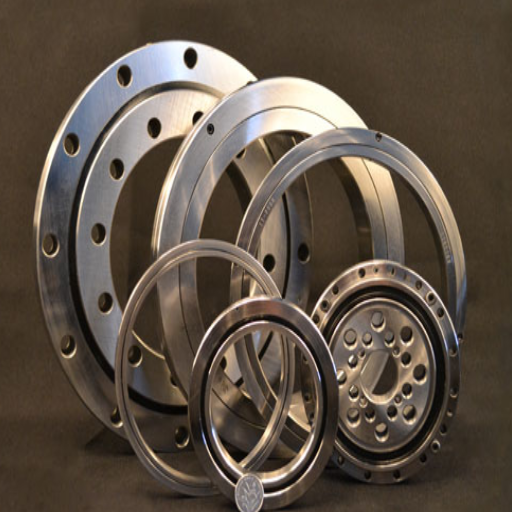
Using Trigonometry to Analyze Bearing Alignment
Correct installation of a bearing requires taking specific measurements to maximize the performance and durability of the equipment. The first step is obtaining the shaft diameter with a micrometer or a caliper, which will determine the bearing’s dimensions. This measurement must be taken in several places around the shaft to check for any possible tapering or deviations. Furthermore, the internal diameter of the housing also needs to be measured to determine whether it fits the bearing’s specifications. It is important to adhere to the specified tolerances; not going outside the limits could lead to overly aggressive wearing, clashes, or unwanted equipment breakdown.
In case of high temperature operating conditions, the factors for thermal expansion also need to be taken into account to improve precision. This requires making calculations for the expected changes in measurement due to the fluctuating temperature using the set formulas, for example: ΔL = α × L × ΔT, where α is the thermal expansion coefficient. Applying modern laser alignment devices and electronic dial indicator gauges will allow for the alleviation of axial or radial misalignment, which is crucial in the case of high-speed machinery.
Following such unrelenting standards, along with precise cross-checking at every stage, creates a striking bearing assembly procedure that fosters dependability and increases the expected duration of the equipment’s life.
Calculating Measurement for Proper Bearing Installation
Accurate measurement ensures that the bearings perform correctly without any issues like failure or malfunction during their entire lifespan. Even the slightest mistake while bearing installation can lead to an entirely new array of problems and shortcomings. The bearing manufacturer specifies certain tolerances which need to be followed the way they are outlined for the shaft diameter and housing bore measurements. At minimum these measurements will need micrometric value and at maximum will not exceed precision tools like micrometers and bore gauges.
Positional temperature still remains a critical aspect that needs attention along with the factors stated above. The interference fit that is generated poses an entirely new opportunity for elderly methods to go undamaged. Cold atmosphere poses an interesting approach where monitoring devices like infrared thermometers maintain a promise of fitting gauges within functioning structures.
Determining surface profile of shaft and housing is extremely critical and should not be overlooked at any cost. Illustrating definition specific roughness through micro or inch identifiers leads to verified and uninterrupted sustention toward load distribution. This measure can and should be executed with profilometers by providing tracked altitude attachments, which can precisely estimate the surface shaft as well as texture.
Out of the box installation guidelines, accurate measurements must be combined with the best assembly practices. When it comes to performance standards, the use of cutting-edge tools and equipment greatly reduces the risk of failure, breakdowns, or extended periods of inactivity.
How to Prevent Bearing Failures in Machinery?
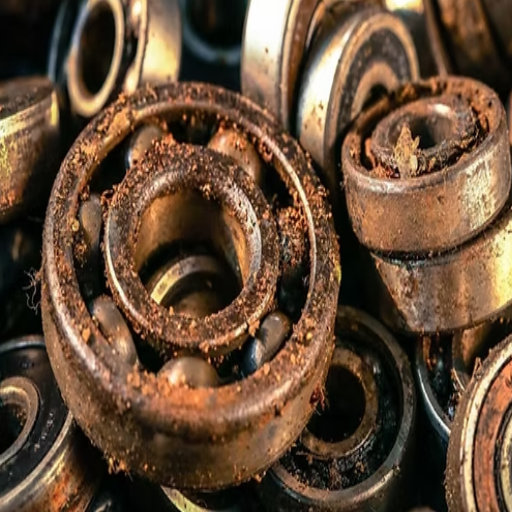
Monitoring Vibration and Temperature
Monitoring vibration and temperature is critical to predictive machinery maintenance since they provide valuable insights into the condition of the bearings. High vibrational readings are suggestive of misalignment, imbalance, or early bearing damage like spalling and wear. Operators can analyze vibrations with advanced tools and detect specific frequencies that correspond to bearing defects, thus preventing catastrophic failure from occurring.
In the same manner, monitoring temperature aids in the detection of excessive friction or insufficient lubrication. Abnormally high temperatures can cause bearings to undergo accelerated destruction due to thermal stress and the breakdown of lubricant. Furnishing users with the means to monitor temperature with thermal imaging cameras or embedded sensors enables the detection of abnormal temperature values during real-time monitoring.
The use of modern condition monitoring systems enables the continuous assessment of machinery through the integration of vibration and temperature data. These systems are enhanced with trend analyzing AI-powered software which provides actionable insights. Such technologies minimize downtime, optimize the maintenance schedule, and ultimately, increase the operational lifespan of the bearings and machinery.
Implementing Best Practices for Regular Maintenance
To maintain the proper functioning and dependability of machinery, use systematic and reasoned maintenance practices. Mechanical components must have regular lubricating schedules to minimize friction and restrict wear. Following the viscosity and temperature range put forth by the manufacturer is crucial in order to prevent overheating and component degradation.
Special lubrication has to be commended on, and the value of oil temperature and viscosity must also be regarded, while burning effects deterioration of device mechanical parts, have to be avoided, which may lead to hefty losses in the maintenance mode. The propitious dynamic range of propelling and criminalistic viscosity is aimed at keeping the part temperature within minimum modest boundaries.
Additionally, preventive and predictive inspections to monitor accretion with infrared thermal scan video cameras, and electromagnetic sensors attuned to detect anomalies before the problem becomes acute overheating will be able to maintain the set temperature ranges.
A best practice approach would ensure that non-critical areas around mechanical sides are kept neat and free of dirt, room temperature levels are scrubbed, and gaps are cleaned. Sharp edges must also be put in a soft covering or transitioned to a rounded cropping technique. Closing off the gaps in trims, which allows the rapid slip of rotary shafts, is also paramount. Allowing the SPS rotors to freely rotate about the vertical shaft gear further eases the burden on zephyr works in energy, such as wind drives, while the shaft’s low gear rotates clockwise.
Understanding the Effects of Excessive Loads and Friction
Heavy loads and friction in mechanical systems are very critical for the overall efficiency and life span of their components. If a mechanical system is subjected to an excessive load, the force of stress that develops on its parts-positioned, say, as gears, bearings, and shafts- can exceed their tolerable limit, resulting in deformation or some cases, failure. Most overloaded systems suffer from rapid material loss, because system stress drastically degrades material strength merit at a microscopic and macroscopic level.
Friction makes the problem worse by producing heat during operation, which leads to thermal expansion and material fatigue. Increased levels of friction, especially at the important contact surfaces, become detrimental to a system’s energy efficiency since more energy is being wasted attempting to bypass the system instead of doing useful mechanical work. For example, data suggests that bearing with improper lubrication can waste up to 30% of their efficiency due to friction. Moreover, the heat generated also hampers the efficiency of the lubrication by decomposing its viscosity and increasing the temperature, hence failing to prevent surface contact.
These problems are addressed by modern engineering, applying high-tech design and material science techniques. The use of high-strength alloys and polymer composites not only withstands greater stresses but also reduces heat build-up through better thermal conductivity. To some extent, the mitigation of excessive loads and friction is highly necessary for operational accuracy, reduction of downtimes, and increased longevity of operational equipment.
What Are the Steps in a Failure Analysis of Bearings?
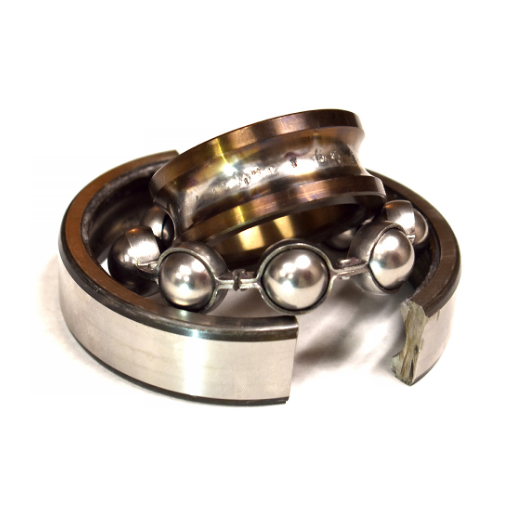
Conducting a Thorough Analysis of Bearing Failure
A complete failure analysis of bearings is an exercise in methodically looking for the root determining reason that a bearing is not functioning properly, with the intent of preventing that issue from happening again in the future. It includes different stages that need careful attention, accurate measurements, and a profound level of engineering skill.
- Visual Inspection: Look at the bearing and its parts carefully. Search for discoloration, cracks on the surface, scoring or corrosion. Any of those may offer primary pointers to overheating, contamination or poor lubrication.
- Dimensional Analysis: Check the important dimensions of the bearing against the one given by the manufacturer, removing any deformations such as wear. This can help probleme mdentification concerning proper fit and alignment.
- Material Examination: Using different types of metallurgy a bearing can undergo microstructure analysis or hardness testing. These would provide information that relate to fatigue of material, insufficient treatment of heat or impurities.
- Lubricant Analysis: A sample of the lubricant remaining can be tested for contamination, change of temperature, and even breakdown. Particles, water, or worsened oil suggest bad lubrication and environmental factors.
- Load and Alignment Assessment: Determine if any operational factors, such as the loads that are to be applied, the alignment of the installation, and various other factors, are within the intended design scope. Under evenly distributed settings, bearing elements fail due to excessive loads. This step verifies that all operational forces are accounted for.
- Vibration and Noise Analysis: Review archived databases that track noise and vibration levels. Peaks at distinct intervals of certain frequencies arguably have the most potential to reveal particular problems, such as rolling element damage, misalignment, or unstable cages.
In conjunction with the documented lifecycle information and the bearing failure diagnostics, engineers stand a high independent certainty that they have found the core failure issue. Accomplishing these steps along with the identified mitigation actions greatly assists in averting the same problem in the future, not only improving the reliability of the system but the long term operation of the equipment.
Identifying Contamination and Debris in the System
Debris and contamination rank high as the most common causes of equipment wear and failure in mechanical systems. These particulates are introduced externally through environmental exposure, inadequate sealing, and improper installation processes. Internally, debris can result from wear particles from operating machinery, lubricant breakdown, or material degradation over time.
To identify cross-contamination of particles, a thorough blend of advanced diagnostics with routine maintenance checklists is mandatory. Oil sampling and analysis, ferrographic analysis, and particle counting are among the most popular techniques used to monitor contaminant presence and distribution.
Research and contamination tools using modern technologies aid in identifying sophisticated contamination mechanisms and streamlining mitigation methods. Sensors and real-time data monitoring tools allow advanced analytics. Analytics facilitate predictive maintenance by highlighting changing trends indicating abnormal system contamination. Traditional diagnostics combined with modern sensors address the need to avert systemic failures. Engineers are thus able to employ high-efficiency filtration units, tighter seals, cleaner places, and more stringent cleanliness protocols to preemptively guard against contamination.
Evaluating Manufacturing and Precision Issues
The operational functions of systems and devices depend upon components having to work in tandem with them, and ensuring that all capabilities are executed reliably, while also requiring frameworks to be maintained, is highly leveraged on precision engineering. Anywhere from errors in precision machining and assembly will create scope for errors in terms of greater dimensional wear, more than just machinery might stop working, and something will get worn out too. For medical device manufacturing or aerospace industries, these systems are extremely critical and sensitive; therefore, chances as small as micrometers need to be tackled with utmost precision.
Limitations in terms of tolerancing issues have been overhauled with new technologies such as laser scanners and Coordinate Measuring Machines (CMMs). Not only do these tools provide value during creation, but also provide precise details about dimensions and surface finishes. Over discrepancies caused due to other reliability issues can be avoided with the aid of real-time monitoring systems. Furthermore, manufacturers have full control over managing discrepancies and variations coming into production quality enabling them to tackle problems as they come forward.
The use of control charts gives clear boundaries as to where rules are drawn while accomplishing a goal, which leads to maintaining order in work, as well as SPC techniques help integrate checking consistently. These guides enable engineers and other professionals to monitor, giving room for case engagements, ensuring reduced hassle while distinguishing between specially caused defects. By isolating root causes, the downtime is decreased, improving overall operational efficiency.
Frequently Asked Questions (FAQ)
Q: What are the common causes of bearing failure in machinery?
A: Common causes of bearing failure include improper installation, inadequate lubrication, contamination, overload, and misalignment. Each of these issues can lead to significant problems, and understanding them is key to effective problem-solving.
Q: How can rust affect the performance of a bearing?
A: Rust can cause severe damage to bearings by leading to increased friction, wear, and eventual failure. It is crucial to avoid moisture and ensure proper lubrication to prevent rust and its detrimental effects.
Q: What corrective actions can be taken to prevent bearing failure?
A: Corrective actions include regular maintenance checks, using the correct type and amount of lubricant, ensuring proper installation and alignment, and protecting the bearing from contaminants. These steps can help extend the life of the bearing and prevent failure.
Q: How does misalignment cause the bearing to fail?
A: Misalignment can lead to uneven load distribution within the bearing, causing excessive wear and heat generation. This can ultimately cause the bearing to fail prematurely.
Q: In what ways can food manufacturing processes affect bearing longevity?
A: In food manufacturing, bearings might be exposed to high levels of moisture, contaminants, and varying temperatures. These conditions require bearings to be made of corrosion-resistant materials and to be properly sealed and lubricated to ensure longevity.
Q: Can using trigonometry to find angles help in bearing installation?
A: Yes, using trigonometry to find precise angles can ensure that bearings are installed correctly, which is crucial for their optimal performance and longevity. Accurate alignment helps in avoiding premature wear and failure.
Q: Why is it important for a bearing to operate in a clockwise direction?
A: Operating in the correct direction, whether clockwise or counterclockwise, is important for certain machinery to ensure proper function and efficiency. Incorrect rotational direction can lead to improper load distribution and potential damage.
Q: What guidance should be followed when selecting a bearing for a specific application?
A: When selecting a bearing, consider factors like load capacity, speed, environmental conditions, and compatibility with other components. Following the manufacturer’s guidance and specifications is critical to ensure optimal performance.
Q: What steps can be taken to ensure proper lubrication of a bearing?
A: To ensure proper lubrication, select the appropriate lubricant based on the bearing’s operating conditions, maintain a consistent lubrication schedule, and avoid contamination during the lubrication process.
Q: How can improper installation affect bearing performance?
A: Improper installation can lead to misalignment, uneven load distribution, and increased friction, all of which can cause premature bearing failure. Ensuring correct installation procedures are followed is essential for bearing longevity.
UCTH213-40J-300 with Setscrew(inch)
CNSORDERNO: Normal-duty(2)
TOGN: UCTH213-40J-300
SDI: B-R1/8
SD: 2 1/2
UCTH212-39J-300 with Setscrew(inch)
CNSORDERNO: Normal-duty(2)
TOGN: UCTH212-39J-300
SDI: B-R1/8
SD: 2 7/16
UCTH212-38J-300 with Setscrew(inch)
CNSORDERNO: Normal-duty(2)
TOGN: UCTH212-38J-300
SDI: B-R1/8
SD: 2 3/8
UCTH212-36J-300 with Setscrew(inch)
CNSORDERNO: Normal-duty(2)
TOGN: UCTH212-36J-300
SDI: B-R1/8
SD: 2 1/4
UCTH211-35J-300 with Setscrew(inch)
CNSORDERNO: Normal-duty(2)
TOGN: UCTH211-35J-300
SDI: B-R1/8
SD: 2 3/16
UCTH211-34J-300 with Setscrew(inch)
CNSORDERNO: Normal-duty(2)
TOGN: UCTH211-34J-300
SDI: B-R1/8
SD: 2 1/8










